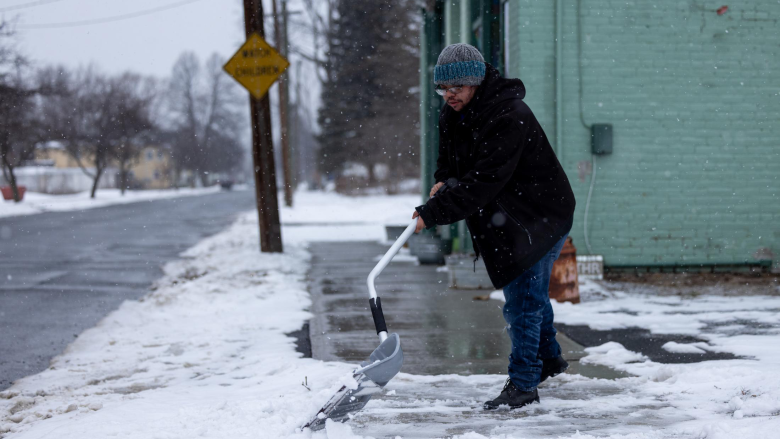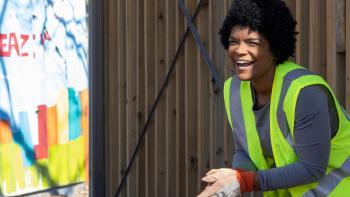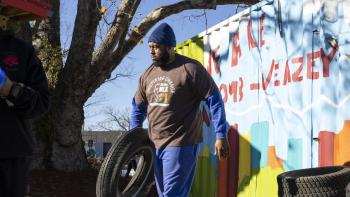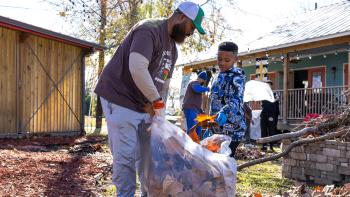
Habitat and residents forge legacy of change in Massachusetts community
Central Berkshire Habitat for Humanity is partnering with residents and local organizations to improve the quality of life in Westside, a historically marginalized and disinvested neighborhood in Pittsfield, Massachusetts. Westside faces high unemployment, low homeownership rates, an aging housing stock and a lack of communal green spaces.
In 2009, Central Berkshire Habitat engaged residents and partners to jointly implement a holistic, community-centered neighborhood revitalization approach to spark changes in the community. Carolyn Valli, Central Berkshire Habitat’s CEO, says listening to residents, hiring them, and centering their hopes and dreams for the neighborhood has been key to driving improvements.
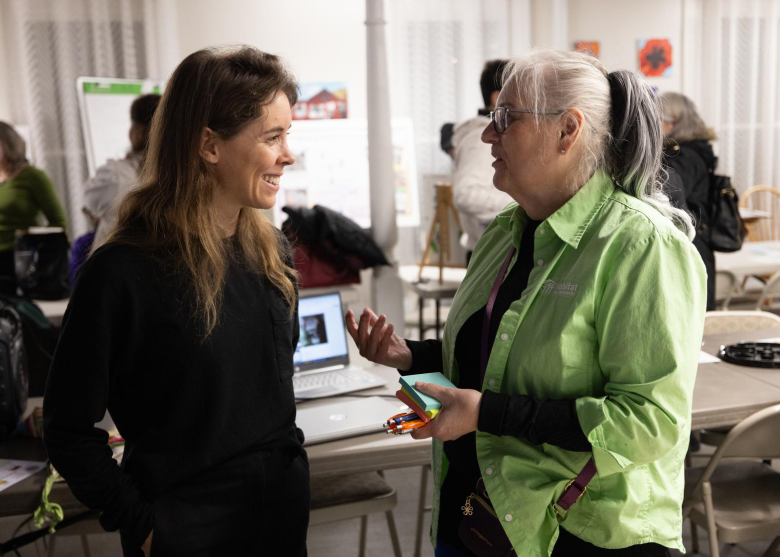
Central Berkshire Habitat CEO Carolyn Valli, right, with architect and Pittsfield resident Tessa Kelly.
“Residents are at the table. They are not an afterthought. They play a major part in making decisions and finding solutions.”— Carolyn Valli, Central Berkshire Habitat’s CEO
The Habitat-led coalition of residents and local partners have come together to:
- Create a workforce development program that trains future homebuilders.
- Build more affordable, decent homes and encourage other affordable home developers to invest and build in the neighborhood.
- Improve public safety by expanding the hours that social workers are on call to support police calls.
- Develop new parks and improve existing parks.
- Advocate successfully for new, safe sidewalks.
- Create murals that reflect the residents’ vision for the future of their community.
Connecting residents to resources
After hearing from residents that community members struggle to connect with local services, Central Berkshire Habitat hired two community navigators, local people with lived experience and cultural responsiveness who can help residents understand and navigate complex systems to reduce barriers to access. Community navigators and residents partnered to find affordable housing options and access food assistance and mental health resources.
Central Berkshire Habitat built on the immediate success of the model and hired additional community navigators. Now, six full-time community navigators speaking three languages — English, French and Spanish — partner with Westside residents as they navigate complex systems and access critical services.
“A lot of community members gave up trying to search for resources or seek out help because they felt they were fighting against a wall,” says Tonya Frazier, Central Berkshire Habitat’s lead community navigator.

Maria Menaca, one of the community navigators at Central Berkshire Habitat, accompanies Jose to the DMV to take a driving test. Navigating local bureaucracies can be difficult for non-English speaking residents. Community navigators can translate in important settings such as this.
“We’ve seen a complete shift from people feeling very shut off to people asking for help and searching for resources.”— Tonya Frazier, Central Berkshire Habitat’s lead community navigator
Habitat’s community navigator model has spread throughout Pittsfield, with more than 40 agencies and local organizations employing their own versions of community navigators.
Strengthening the community through resident-led revitalization
Residents are encouraged by the progress they’ve seen in the neighborhood and the way the community has rallied together to improve the quality of life in Westside. “It makes me shed happy tears to see the change that Habitat and the residents have brought to this community,” says Tonya, who lives in Westside with her husband and children. “It gives you an extra bounce in your step to be in the Westside.”

Tonya Frazier poses for a portrait next to the little book library on Columbus Ave.
In Westside and communities across the U.S., Habitat affiliates are partnering with residents to implement neighborhood revitalization projects and inspire lasting community-wide change. “We’re considered community developers now,” Carolyn says. “At the end of the day, that’s the legacy we want to have. It’s about how we have helped change the entire community based on what the community wants.”


